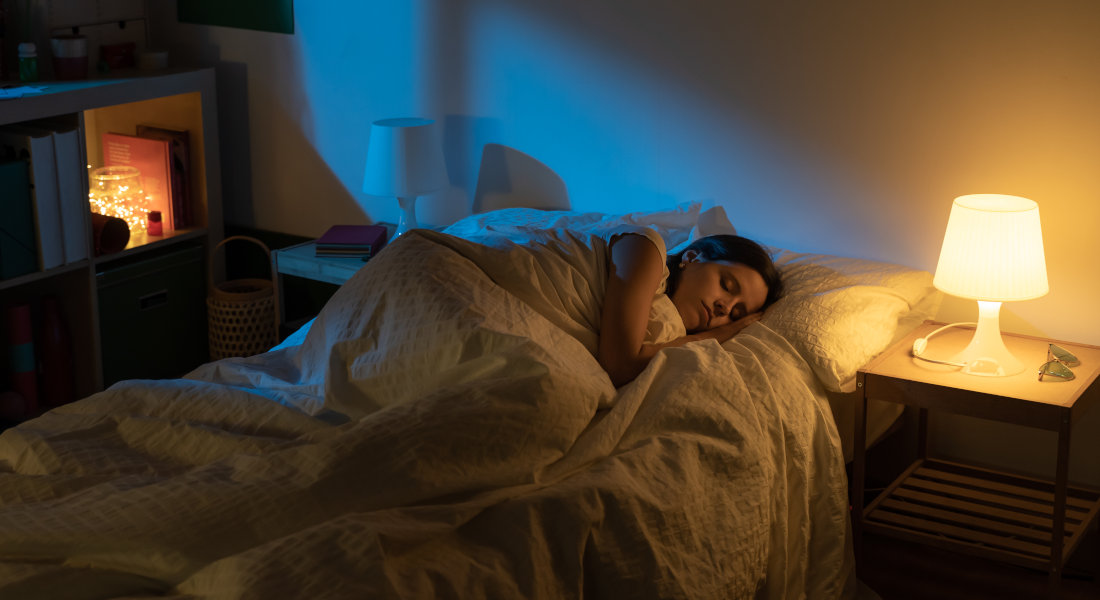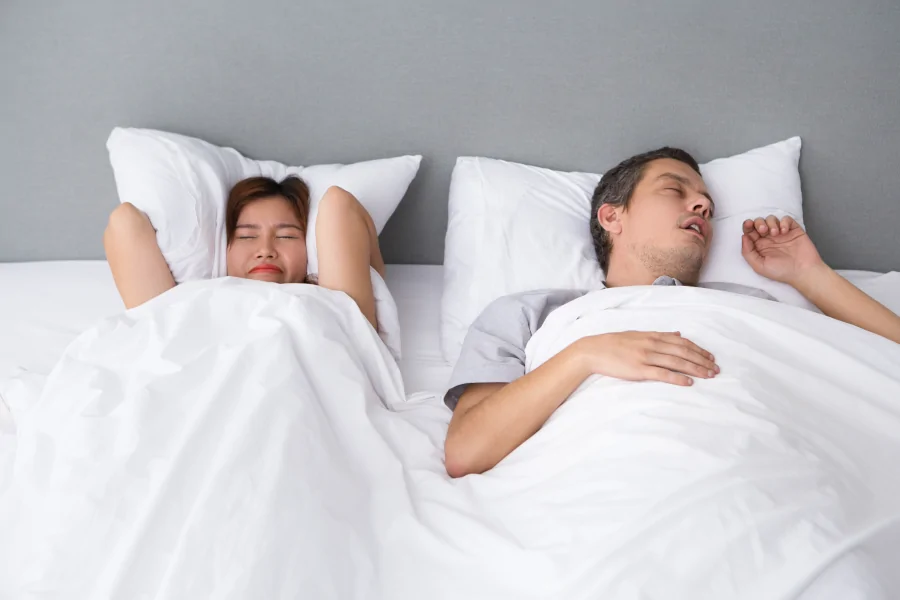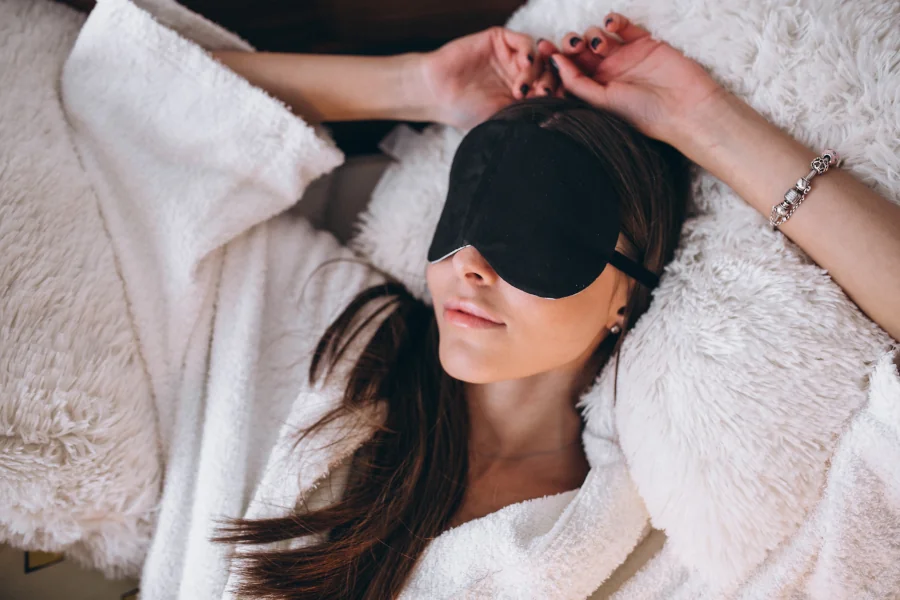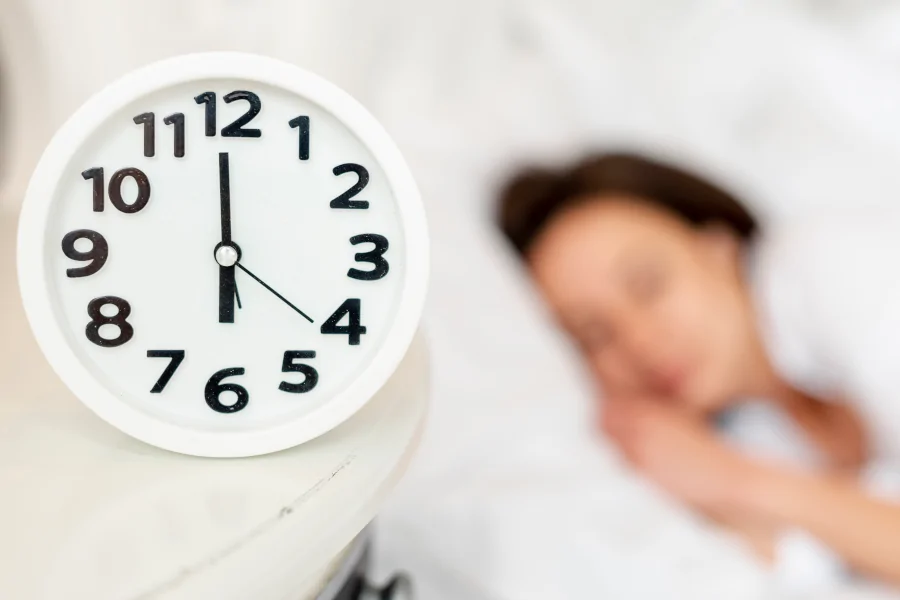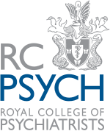Falling asleep can be a challenge at times. Sometimes, the cause may be linked to either your age, lifestyle, any medications you take, or an underlying health disorder. You may find it difficult to fall asleep because of insomnia, a common problem which can affect up to 1 in 3 people in the UK.
However, falling asleep quickly can take some practice to achieve. Some patients feel relatively satisfied with their sleeping pattern, but it takes them more than an hour to actually fall asleep, which isn’t ideal. The general recommendation is for an adult to sleep for 7 to 9 hours per night. So being able to fall asleep quickly is important.
Why you might be struggling to sleep
There are a multitude of reasons for your sleep struggles and many people struggle to sleep for similar reasons. It can be helpful to avoid drinking caffeine in the late afternoon, or consuming alcohol in the evenings. Coffee contains large amounts of caffeine which is a powerful stimulant. Alcohol, whilst it might make you sleepy, may result in you waking up during the night to visit the bathroom.
Other reasons you may be struggling to sleep are:
- Using a screen shortly before bed
- Sleeping or napping during the day
- Strenuous exercise 3 hours before going to bed
- Eating or drinking 2-3 hours before going to bed
Even if you aren’t doing any of the above, you may still struggle to fall asleep quickly, and if this is the case, we have 10 ways to help you fall asleep fast.
10 ways to fall asleep fast
1. Breathing exercises
A variety of breathing exercises have been designed to help you sleep better. These techniques work because slow and deep breaths enable a sense of calm, allowing you to enter a relaxation phase. This is also known as pranayamic breathing; it can reduce stress on the nervous system and prepare the brain and body for sleep by reducing excitatory triggers.
A popular breathing exercise is the 4-7-8 breathing method:
- Empty your lungs completely by letting your lips part and audibly exhaling through your mouth.
- Keeping your mouth closed, inhale quietly through your nose while counting to 4.
- Hold your breath for a count of 7.
- Exhale slowly through your mouth for a count of 8.
- Repeat this cycle around 6 times before returning to normal breathing.
2. Read a book or journal
Try picking up a fiction or non-fiction book to read every night. This will create a calm environment and allow your body to relax before you sleep. It is a better alternative to electronics, as blue light can negatively affect your sleeping cycle.
Many of our patients benefit from journaling every night. This can help to get all your thoughts from the day out of your mind, and onto paper. This is a good way of easing up from the ‘burden’ of our daily lives and jobs. Journaling can help to release stress and give you a clearer frame of mind as you prepare for bed.
3. Listen to relaxing music
The ability to hear comes from a series of steps that convert sound waves coming into the ear into electrical signals for the brain to interpret. Several studies have shown that listening to music can help regulate hormonal levels, including cortisol, the stress hormone. Listening to music decreases cortisol levels, which may explain why music effectively puts people at ease and releases stress.
What type of music should you listen to help you sleep? Research has looked at various genres and playlists without a clear consensus. A self-curated playlist or one created with sleep in mind works best.
When creating your playlist, tempo is one of the most important factors. The tempo or speed of the music is often measured in beats per minute (BPM). Most research has used music with a 60-100 BPM tempo as normal heart rates range between 60-100 BPM. This is because it’s hypothesised that the body can ‘sync’ with the tempo of the music.
Avoid songs which may elicit strong emotional reactions. Also, avoid listening to music at higher volumes, as headphones and earbuds may cause damage to the ear and surrounding structures if played at a high volume. Use a small speaker or stereo near the bed without bright lights and set it to a soothing volume where possible.
4. Mindfulness and meditation
Meditation techniques often combine mental and physical aspects of our health. Thus, by targeting anxious, stressful thoughts alongside a physically stressed body, meditation can help us reach an overall state of relaxation.
Mindfulness and meditation can help people sleep in different ways, such as slowed breathing, calmed stress pathways, and improved mental health. Some popular methods of meditation to help fall asleep are:
Yoga
There are various yoga techniques, but most focus on a core set of principles: mindfulness meditation, diaphragmatic breathing and stretching poses. New evidence shows that yoga nidra, a type of yoga that induces a sleep-like state, may improve sleep quality and reduce time spent awake in bed.
Mindfulness meditation
This involves concentrating on the present and allowing yourself to experience emotions and thoughts without judgement. Mindfulness may help a person relax at bedtime and improve sleep quality.
5. Try the military sleep technique
The US military uses a recently popularised technique of falling asleep. Whilst there is no clinical evidence base for the military method, there have been reports of this proving to work well for some people. It is designed to help you fall asleep in ‘2 minutes or less.’
The steps are as follows:
- Relax your face completely: close your eyes and breathe slowly while relaxing your facial muscles. We recommend starting with your forehead and working downwards.
- Drop your shoulder tension and relax your hands. Once your face is relaxed, follow the same principle: relax your neck and shoulders and go down one arm at a time. Breathe slowly and steadily throughout.
- Exhale and let your chest relax: Similar to the previous steps, but focus on your chest this time. Work slowly, and get used to how this feels.
- Relax your legs one by one, Starting with your right thigh and then focusing on the calf, ankle, and foot. Imagine yourself sinking into your chair or bed here. Repeat for your left leg.
- Clear your mind: Try to relax your mind and empty your mind of thoughts by focusing on a relaxing image or thought etc.
6. Use guided imagery
Feelings of stress may be the cause of your poor sleep. Guided imagery is a method for managing that stress. It is a relation technique designed around visualising positive and peaceful settings. Being surrounded by these images will elicit a positive response and allow you to reduce your stress, promote relaxation and ease other symptoms linked to your stress. Guided imagery has also been shown to improve pain and anxiety symptoms and sleep.
7. Autogenic training
Autogenic training originates from Germany and has been developed by doctors. It is over 100 years old. The training is designed to be self-administered and contains a sequence of simple ‘mental exercises’ with an easy-to-follow structure.
Repetition of these exercises can help you quieten down your stress response and help balance the body and mind. It has been reported that those who practice this have developed the will and capacity to switch to a calm state easily. You can learn more about autogenic training and its benefits here.
8. Do a body scan
A body scan is another meditation technique to help you relax and drift off to sleep. Access a free guide on how to do a body scan and other breathing techniques here. These guides are available in various languages to help with ease of access.
9. Try aromatherapy
Aromatherapy, in some cases, has been shown to encourage better sleep. The principle is similar to other techniques, focusing on relaxing the body, releasing tension and easing stress. Consider using either of the following two to help you fall asleep more easily:
Chamomile: Drink as a tea or use as an essential oil. A 2017 study found that older adults with insomnia have an improved sleep quality with the use of chamomile extract.
Lavender oil: Use as a pillow spray or in a patch, massage oil, or aromatherapy diffuser. A 2020 systematic review found that lavender improved sleep onset, duration, and quality in those with sleep disorders.
10. Progressive muscle relaxation
This is a deep muscle relaxation technique suggested by the American Academy of Sleep. It helps the body relax and promote sleepiness. This video is a great guide on helping you do PMR at home under self-guidance.
- Optimise your bedding for comfort and bedroom environment by having a cool temperature in the room
- Have a warm shower or bath before bed
What’s the best way to try all of these methods?
As we all know, sleep is a complex subject, and there is usually not one single method alone that improves your sleep quality. We would recommend trying each method for at least 3 nights in a row and seeing whether:
- There has been any improvement in your sleep
- You feel more awake and alert when waking in the morning
- How your concentration levels are during the day
Make a note of these, and if you do not sense an improvement – try the next technique. You may require a combination of techniques to help you fall asleep better. It is possible that some people may find that none of these methods particularly improve their sleep. In this case, it may be worth considering seeing a sleep physician, so the reasons for the sleeping difficulties can be explored further.
What if none of these work?
If you feel the above techniques have not improved your sleep and suspect an underlying health cause, then please get in touch. If this is the case, it is important to identify any causative factors as soon as possible and take the right steps to ensure the best treatment and care is given.
As a sleep physician and psychiatrist, Dr Dipesh Mistry offers consultations for those struggling to sleep. Please feel free to contact us if you require further advice on methods to help fall asleep, or after a trial of these methods, are still unable to fall asleep.
